Computer Graphics, C Version (2nd Ed.)
Contents
Ch1 A Survey of Computer Graphics
1.1 Computer-Aided Design
1.2 Presentation Graphics
1.3 Computer Art
1.4 Entertainment
1.5 Education & Training
1.6 Visualization
1.7 Image Processing
1.8 Graphical User Interfaces
Ch2 Overview of Graphics Systems
2.1 Video Display Devices
2.2 Raster-Scan Systems
2.3 Random-Scan Systems
2.4 Graphics Monitors & Workstations
2.5 Input Devices
2.6 Hard-Copy Devices
2.7 Graphics Software
Summary
References
Exercise
Ch3 Output Primitives
3.1 Points & Lines
3.2 Line-Drawing Algorithms
3.3 Loading the Frame Buffer
3.4 Line Function
3.5 Circle-Generating Algorithms
3.6 Ellipse-Generating Algorithms
3.7 Other Curves
3.8 Parallel Curve Algorithms
3.9 Curve Functions
3.10 Pixel Addressing & Object Geometry
3.11 Filled-Area Primitives
3.12 Fill-Area Functions
3.13 Cell Array
3.14 Character Generation
Summary
Applications
References
Exercises
Ch4 Attributes of Output Primitives
4.1 Line Attributes
4.2 Curve Attributes
4.3 Color & Grayscale Levels
4.4 Area-Fill Attributes
4.5 Character Attributes
4.6 Bundled Attributes
4.7 Inquiry Functions
4.8 Antialiasing
Summary
References
Exercises
Ch5 Two-Dimensional Geometric Transformations
5.1 Basic Transformations
5.2 Matrix Representations & Homogeneous Coordinates
5.3 Composite Transformations
5.4 Other Transformations
5.5 Transformations between Coordinate Systems
5.6 Affine Transformations
5.7 Tansformation Functions
5.8 Raster Methods for Transformations
Summary
References
Exercises
Ch6 Two-Dimensional Viewing
6.1 The Viewing Pipeline
6.2 Viewing Coordinate Reference Frame
6.3 Window-to-Viewport Coordinate Transformation
6.4 Two-Dimensional Viewing Functions
6.5 Clipping Operations
6.6 Point Clipping
6.7 Line Clipping
6.8 Polygon Clipping
6.9 Curve Clipping
6.10 Text Clipping
6.11 Exterior Clipping
Summary
References
Exercises
Ch7 Structures & Hierarchical Modeling
7.1 Structure Concepts
7.2 Editing Structures
7.3 Basic Modeling Concepts
7.4 Hierarchical Modeling with Structures
Summary
References
Exercises
Ch8 Graphic User Interfaces & Interactive Input Methods
8.1 The User Dialogue
8.2 Input of Graphical Data
8.3 Input Functions
8.4 Initial Values for Input-Device Parameters
8.5 Interactive Picture-Construction Techniques
8.6 Virtual-Reality Environments
Summary
References
Exercises
Ch9 Three Dimensional Concepts
9.1 Three-Dimensional Display Methods
9.2 Three-Dimensional Graphics Packages
Ch10 Three-Dimensional Object Representations
10.1 Polygon Surfaces
10.2 Curved Lines & Surfaces
10.3 Quadric Surfaces
10.4 Superquadrics
10.5 Blobby Objects
10.6 Spline Representations
10.7 Cubic Spline Interpolation Methods
10.8 Bezier Curves & Surfaces
10.9 B-Spline Curves & Surfaces
10.10 Beta-Splines
10.11 Rational Splines
10.12 Conversion between Spline Representations
10.13 Displaying Spline Curves & Surfaces
10.14 Sweep Representaions
10.15 Constructive Solid-Geometry Methods
10.16 Octrees
10.17 BSP Trees
10.18 Fractal-Geometry Methods
10.19 Shape Grammars & Other Procedural Methods
10.20 Particle Systems
10.21 Physically Based Modeling
10.22 Visualization of Data Sets
Summary
References
Exercises
Ch11 Three-Dimensional Geometric & Modeling Transformations
11.1 Translation
11.2 Rotation
11.3 Scaling
11.4 Other Transformations
11.5 Composite Transformations
11.6 Three-Dimensional Transformation Functions
11.7 Modeling & Coordinate Transformations
Summary
References
Exercises
Ch12 Three-Dimensional Viewing
12.1 Viewing Pipeline
12.2 Viewing Coordinates
12.3 Projections
12.4 View Volumes & General Projection Transformations
12.5 Clipping
12.6 Hardware Implementations
12.7 Three-Dimensional Viewing Functions
Summary
References
Exercises
Ch13 Visible-Surface Detection methods
13.1 Classification of Visible-Surface Detection Algorithms
13.2 Back-Face Detection
13.3 Depth-Buffer Method
13.4 A-Buffer Method
13.5 Scan-Line Method
13.6 Depth-Sorting Method
13.7 BSP-Tree Method
13.8 Area-Subdivision Method
13.9 Octree Methods
13.10 Ray-Casting Method
13.11 Curved Surfaces
13.12 Wireframe Methods
13.13 Visibility-Detection Functions
Summary
References
Exercises
Ch14 Illustration Models & Surface-Rendering Methods
14.1 Light Sources
14.2 Basic Illumination Models
14.3 Displaying Light Intensities
14.4 Halftone Patterns & Dithering Techniques
14.5 Polygon-Rendering Methods
14.6 Ray-Tracing Methods
14.7 Radiosity Lighting Model
14.8 Environment Mapping
14.9 Adding Surface Detail
Summary
References
Exercises
Ch15 Color Models & Color Applications
15.1 Properties of Light
15.2 Standard Primaries & Chromaticity Diagram
15.3 Intuitive Color Concepts
15.4 RGB Color Model
15.5 YIQ Color Model
15.6 CMY Color Model
15.7 HSV Color model
15.8 Conversion between HSV & RGB Models
15.9 HLS Color Model
15.10 Color Selection & Applications
Summary
References
Exercises
Ch16 Computer Animation
16.1 Design of Animation Sequences
16.2 General Computer-Animation Functions
16.3 Raster Animations
16.4 Computer-Animation Languages
16.5 Key-Frame Systems
16.6 Motion Specifications
Summary
References
Exercises
AppA Mathematics for Computer Graphics
A.1 Coordinate Reference Frames
A.2 Points & Vectors
A.3 Basis Vectors & the Metric Tensor
A.4 Matrices
A.5 Complex Numbers
A.6 Quaternions
A.7 Nonparametric Representations
A.8 Parametric Representations
A.9 Numerical Methods
Bibliography
Subject Index
Function Index

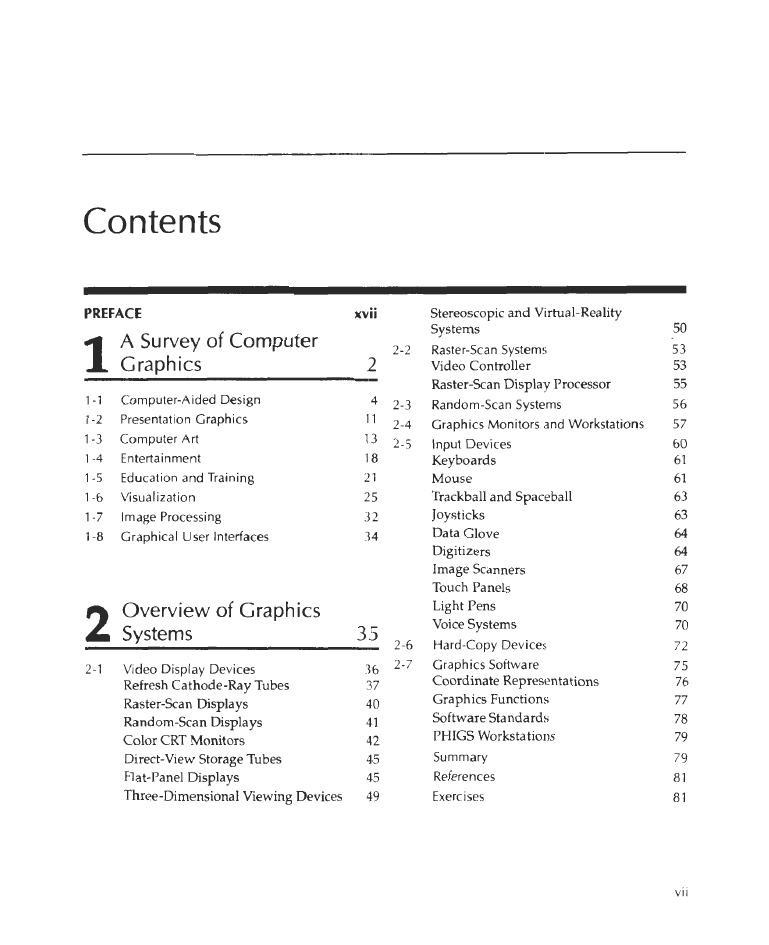
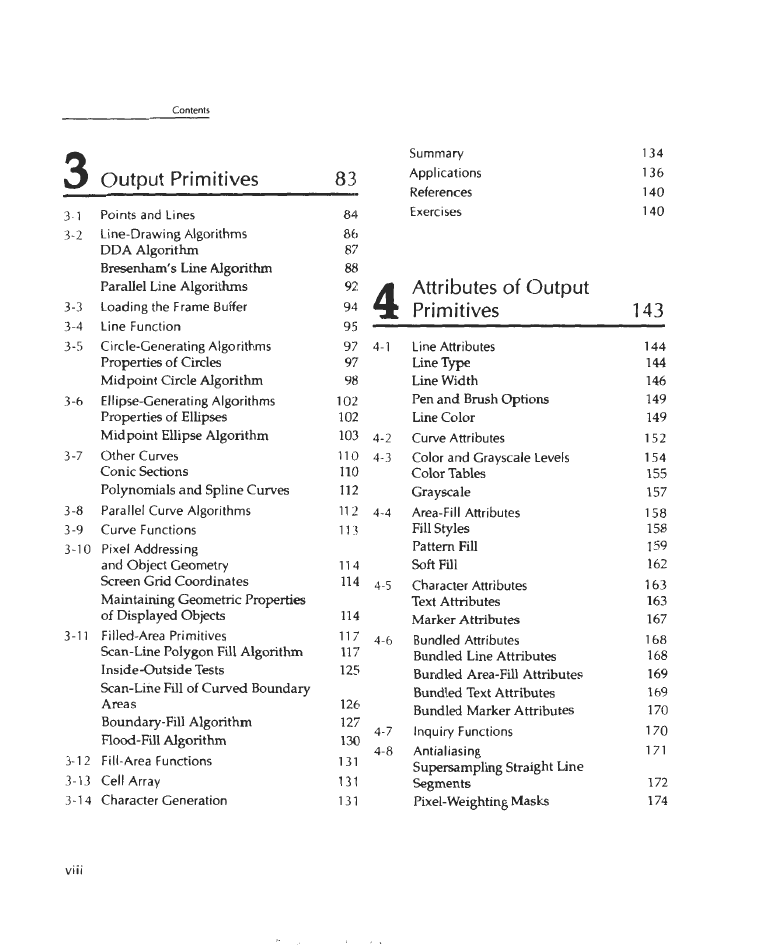

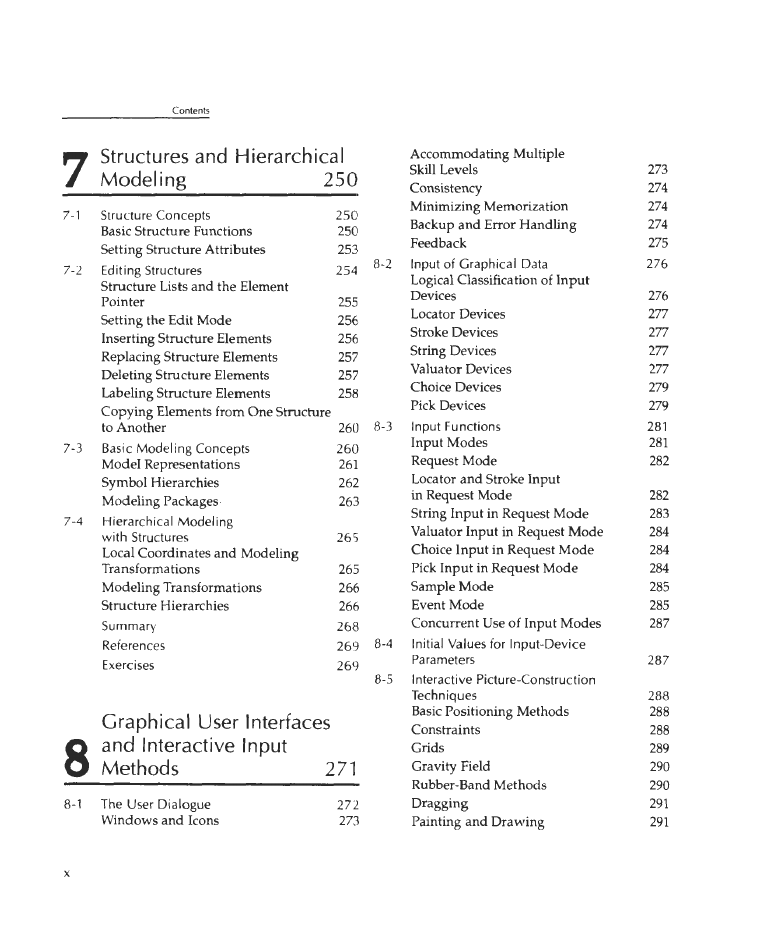

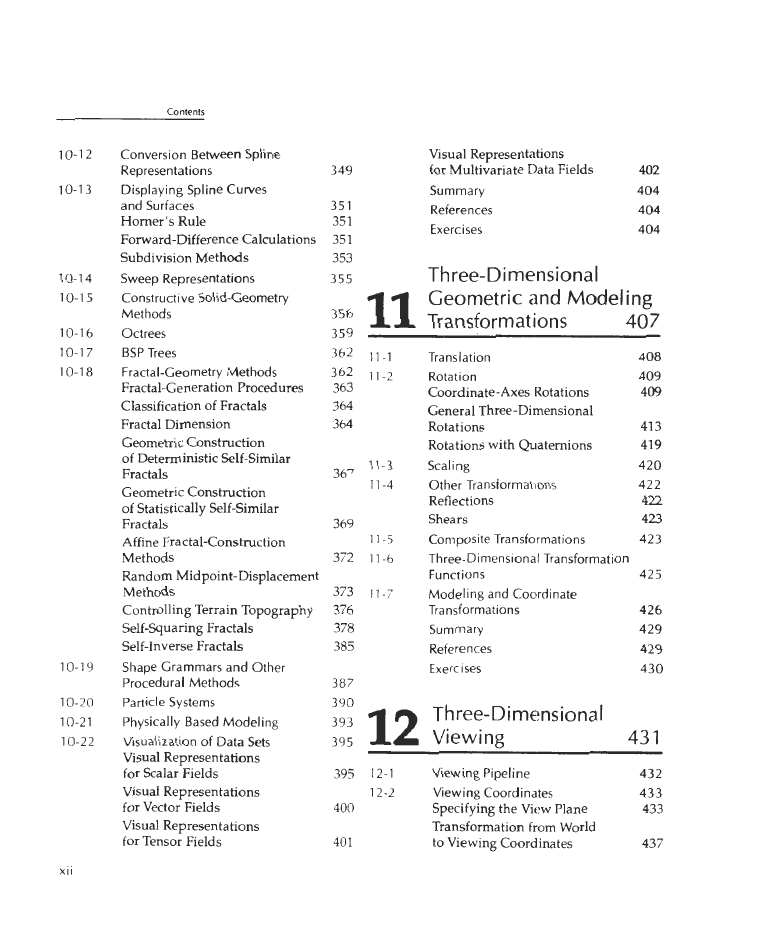
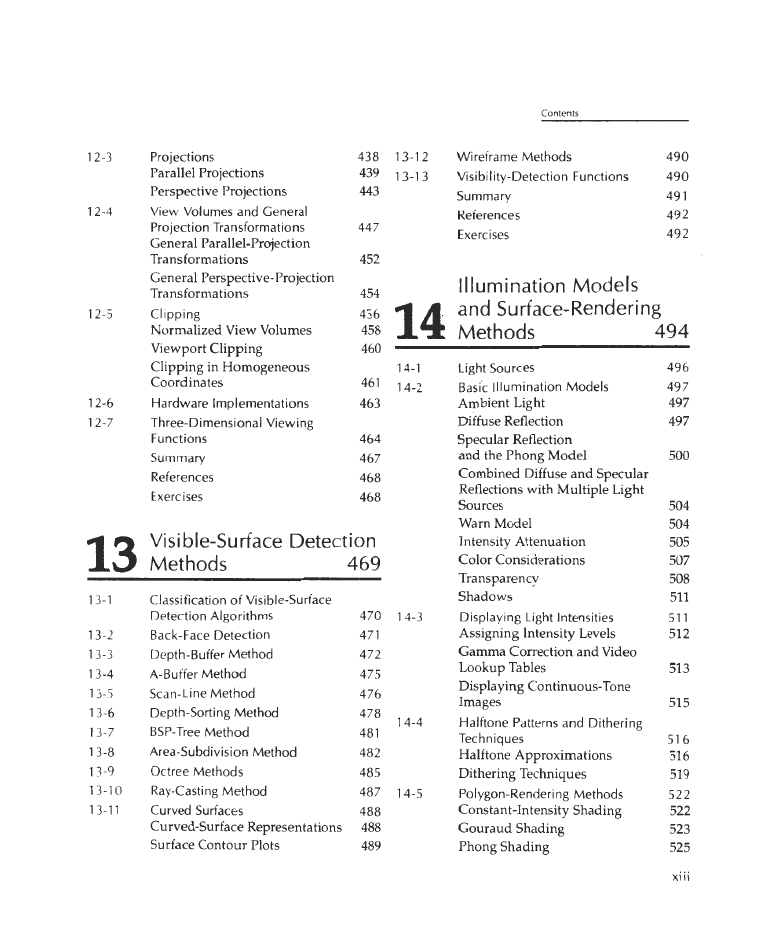








 2023年江西萍乡中考道德与法治真题及答案.doc
2023年江西萍乡中考道德与法治真题及答案.doc 2012年重庆南川中考生物真题及答案.doc
2012年重庆南川中考生物真题及答案.doc 2013年江西师范大学地理学综合及文艺理论基础考研真题.doc
2013年江西师范大学地理学综合及文艺理论基础考研真题.doc 2020年四川甘孜小升初语文真题及答案I卷.doc
2020年四川甘孜小升初语文真题及答案I卷.doc 2020年注册岩土工程师专业基础考试真题及答案.doc
2020年注册岩土工程师专业基础考试真题及答案.doc 2023-2024学年福建省厦门市九年级上学期数学月考试题及答案.doc
2023-2024学年福建省厦门市九年级上学期数学月考试题及答案.doc 2021-2022学年辽宁省沈阳市大东区九年级上学期语文期末试题及答案.doc
2021-2022学年辽宁省沈阳市大东区九年级上学期语文期末试题及答案.doc 2022-2023学年北京东城区初三第一学期物理期末试卷及答案.doc
2022-2023学年北京东城区初三第一学期物理期末试卷及答案.doc 2018上半年江西教师资格初中地理学科知识与教学能力真题及答案.doc
2018上半年江西教师资格初中地理学科知识与教学能力真题及答案.doc 2012年河北国家公务员申论考试真题及答案-省级.doc
2012年河北国家公务员申论考试真题及答案-省级.doc 2020-2021学年江苏省扬州市江都区邵樊片九年级上学期数学第一次质量检测试题及答案.doc
2020-2021学年江苏省扬州市江都区邵樊片九年级上学期数学第一次质量检测试题及答案.doc 2022下半年黑龙江教师资格证中学综合素质真题及答案.doc
2022下半年黑龙江教师资格证中学综合素质真题及答案.doc